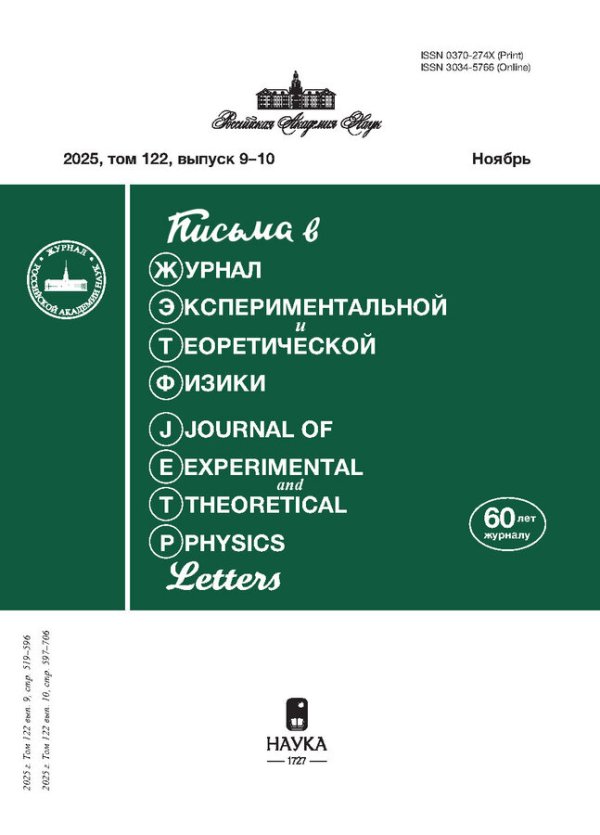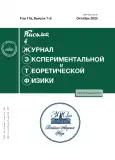Possible Search for Majorana Neutrinos at Future Lepton Colliders
- Authors: Antonov E.S1, Drutskoy A.G1, Dubinin M.N2
-
Affiliations:
- Lebedev Physical Institute, Russian Academy of Sciences
- Skobeltsyn Institute of Nuclear Physics, Moscow State University
- Issue: Vol 118, No 7-8 (10) (2023)
- Pages: 473-482
- Section: Articles
- URL: https://vestnik.nvsu.ru/0370-274X/article/view/661552
- DOI: https://doi.org/10.31857/S1234567823190011
- EDN: https://elibrary.ru/XVHOMC
- ID: 661552
Cite item
Abstract
We discuss the process
About the authors
E. S Antonov
Lebedev Physical Institute, Russian Academy of Sciences
Email: antonoves@lebedev.ru
119991, Moscow, Russia
A. G Drutskoy
Lebedev Physical Institute, Russian Academy of Sciences
Email: drutskoy@lebedev.ru
119991, Moscow, Russia
M. N Dubinin
Skobeltsyn Institute of Nuclear Physics, Moscow State University
Author for correspondence.
Email: dubinin@theory.sinp.msu.ru
119991, Moscow, Russia
References
- A.M. Abdullahi, P.B. Alzah, B. Batell et al. (Collaboration), J. Phys. G 50(2), 020501 (2023)(Contribution to: Proceedings of Snowmass 2021).
- F. F. Deppisch, P. S. Bhupal Dev, and A. Pilaftsis, New J. Phys. 17(7), 075019 (2015).
- W. Rodejohann, Int. J. Mod. Phys. E 20, 1833 (2011).
- T. Asaka and T. Tsuyuki, Phys. Rev. D 92(9), 094012 (2015).
- G. Aad, B. Abbott, K. Abeling et al. (ATLAS collaboration), arXiv:2305.14931.
- A. Tumasyan, W. Adam, J. W. Andrejkovic et al. (CMS collaboration), Phys. Rev. Lett. 131, 011803 (2023).
- A.M. Sirunyan, A. Tumasyan, W. Adam et al. (CMS collaboration), Phys. Rev. Lett. 120, 221801 (2018).
- B. Fuks, J. Neundorf, K. Peters, R. Ruiz, and M. Saimpert, Phys. Rev. D 103(5), 055005 (2021).
- F. del Aguila, J.A. Aguilar-Saavedra, and R. Pittau, JHEP 10, 047 (2007).
- J. L. Schubert and O. Ruchayskiy, arXiv:2210.11294.
- K. Me˛ka la, J. Reuter, and A. F. ˙Zarnecki, JHEP 06, 010 (2022).
- F. Almeida Jr., Y. Coutinho, J. Martins Simoes, M. do Vale, and S. Wulck, Eur. Phys. J. C 22, 277 (2001).
- E. Boos, V. Bunichev, M. Dubinin et al. (CompHEP Collaboration), Nucl. Instrum. Methods A 534, 250 (2004).
- A. Pukhov, E. Boos, M. Dubinin, V. Edneral, V. Ilyin, D. Kovalenko, A. Kryukov, V. Savrin, S. Shichanin, and A. Semenov, arXiv:hep-ph/9908288.
- A. Alloul, N.D. Christensen, C. Degrande, C. Duhr, and B. Fuks, Comput. Phys. Commun. 185, 2250 (2014).
- W. Kilian, T. Ohl, and J. Reuter, Eur. Phys. J. C 71, 1742 (2011).
- J. de Favereau, C. Delaere, P. Demin, A. Giammanco, V. Lemaˆ itre, A. Mertens, and M. Selvaggi (DELPHES 3 Collaboration), JHEP 02, 057 (2014).
- K. Me˛ka la, J. Reuter, and A. F. ˙Zarnecki, Phys. Lett. B 841, 137945 (2023).
- T.H. Kwok, L. Li, T. Liu, and A. Rock, arXiv:2301.05177.
- P. Li, Z. Liu, K.F. Lyu, arXiv:2301.07117.
- J. Alwall, M. Herquet, F. Maltoni, O. Mattelaer, and T. Stelzer, JHEP 06, 128 (2011).
- T. Li, C. Y. Yao, and M. Yuan, arXiv:2306.17368.
- H. Gu and K. Wang, Phys. Rev. D 106, 015006 (2022).
- A. Semenov, Comput. Phys. Commun. 180, 431 (2009).
- T. Sjostrand, S. Mrenna, and P. Skands, J. High Energy Phys. 05, 026 (2006).
- S. Banerjee, P. S.B. Dev, A. Ibarra, T. Mandal, and M. Mitra, Phys. Rev. D 92, 075002 (2015).
- J. L. Yang, C.H. Chang, and T. F. Feng, arXiv:2302.13247.
- R. Jiang, T. Yang, S. Qian, Y. Ban, J. Li, Z. You, and Q. Li, arXiv:2304.04483.
- J. Schechter and J. W. F. Valle, Phys. Rev. D 22, 2227 (1980).
- J. Casas and A. Ibarra, Nucl. Phys. B 618, 171 (2001).
- A. Ibarra, E. Molinaro, and S. Petcov, JHEP 09, 108 (2010).
- B. Pontecorvo, Sov. Phys. JETP 7, 172 (1958).
- Z. Maki, M. Nakagawa, and S. Sakata, Prog. Theor. Phys. 28, 870 (1962).
- T. Asaka, S. Eijima, and H. Ishida, JHEP 04, 011 (2011).
- K. Bondarenko, A. Boyarsky, J. Klaric, O. Mikulenko, O. Ruchayskiy, V. Syvolap, and I. Timiryasov, JHEP 07, 193 (2021).
- S. Alekhin, W. Altmannshofer, T. Asaka et al. (Collaboration), Rep. Prog. Phys. 79, 124201 (2016).
- M. Drewes, arXiv:2210.17110.
- E. Boos, M. Dubinin, A. Pukhov, M. Sachwitz, and H. J. Schreiber, Eur. Phys. J. C 21, 81 (2001).
Supplementary files








